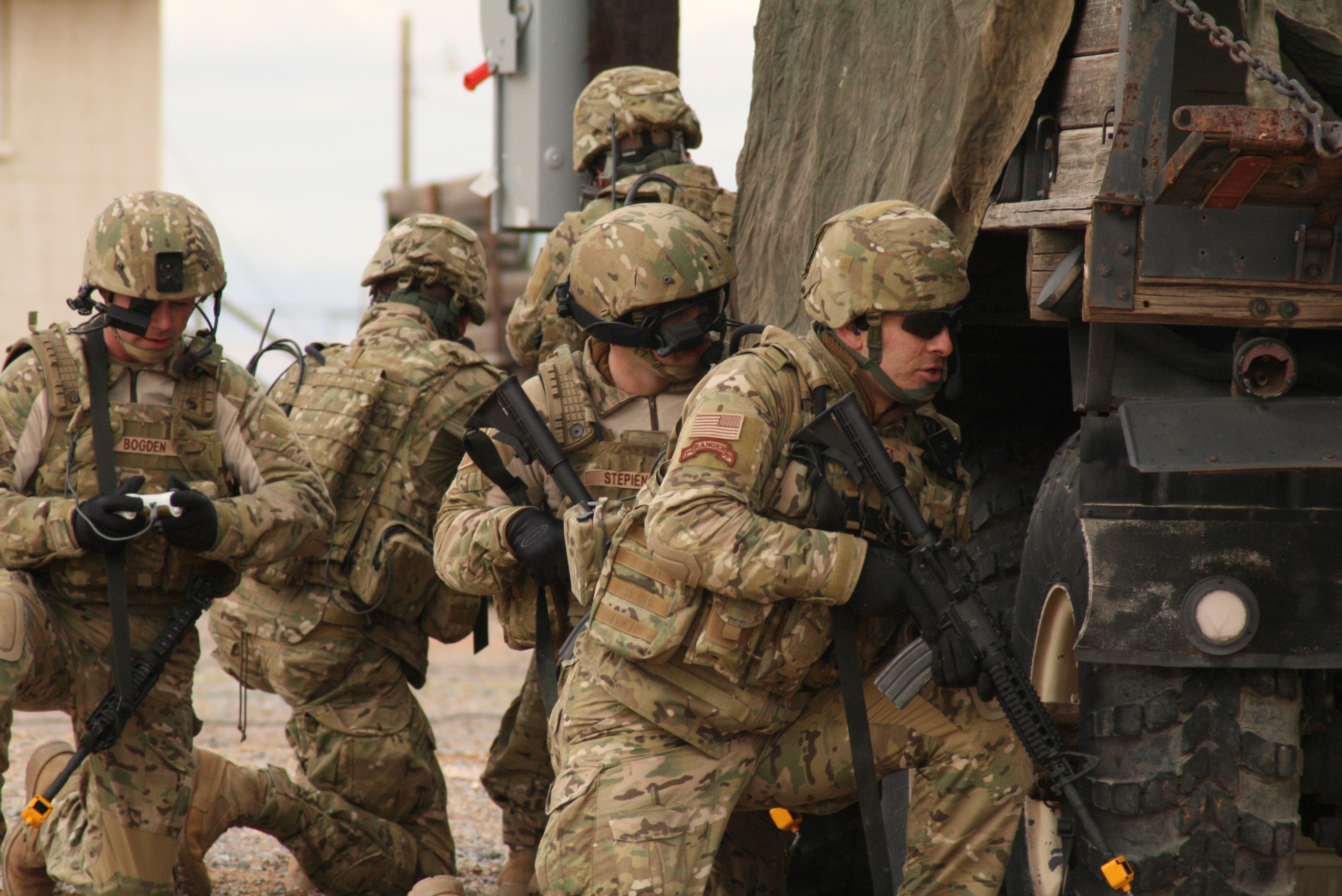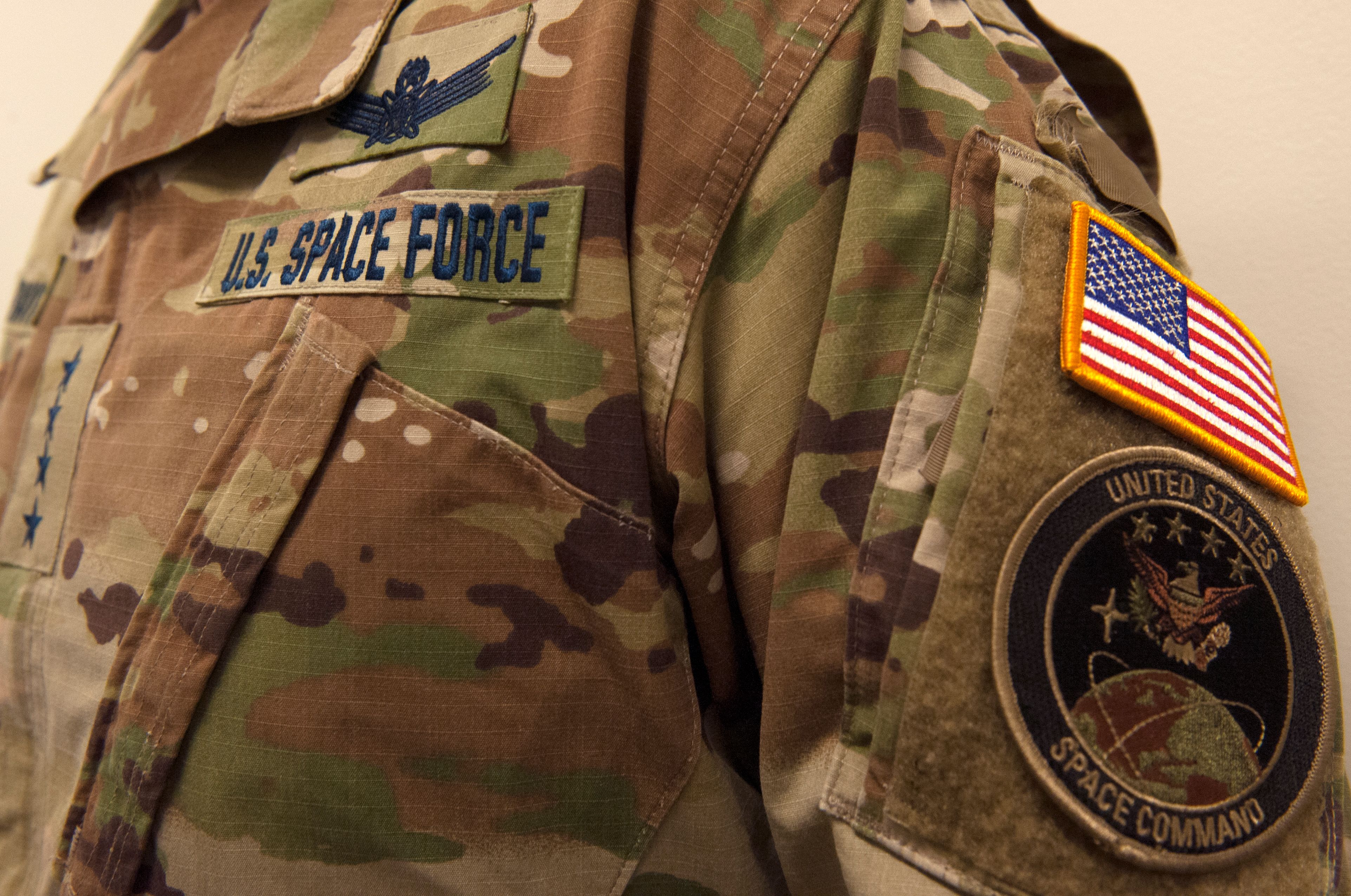|
IOTV
The Improved Outer Tactical Vest (IOTV) is an enhanced version of, and a replacement for, the older Outer Tactical Vest (OTV) component of the Interceptor multi-threat body armor system, as fielded by the United States Army beginning in the mid-2000s. The IOTV is compatible with the Deltoid and Axillary Protector System (DAPS) components, Small Arms Protective Insert, ESAPI (Enhanced Small Arms Protective Insert), Enhanced Side Ballistic Inserts (ESBI), as well as the OTV's groin protector. A flame-resistant standalone shirt, the Army Combat Shirt, Army Combat Shirt (ACS), was designed in the late 2000s specifically for use with the IOTV. The OTV design was considered insufficient and lacking in certain areas, which led to the IOTV's development and fielding beginning in 2007. The IOTV is currently produced by Point Blank Body Armor, BAE Systems, KDH Defense Systems, Protective Products Enterprises, UNICOR and Creative Apparel Associates. The IOTV first saw action in combat with U ... [...More Info...] [...Related Items...] OR: [Wikipedia] [Google] [Baidu] |
Outer Tactical Vest
The Interceptor multi-threat body armor system (IBA) is a bullet-resistant body armor system that was used by the United States Armed Forces during the 2000s, with some limited usage into the mid-2010s. IBA and its design replaced the older standardized fragmentation protective Personnel Armor System for Ground Troops (PASGT) body armor system that was designed in the late 1970s and introduced in the early 1980s. The IBA system consists of its core component: the outer tactical vest (OTV), which can optionally be worn with a throat protector, groin protector, and biceps (or deltoid) protector. The latter three auxiliary protectors are removable from the main vest, which can be worn alone. IBA was designed in the late 1990s as a replacement for the PASGT vest and the essentially-improvised ISAPO supplemental armor plate carrier, a combination widely criticized by US troops for its immense weight. It comes in a variety of color schemes and camouflage patterns depending on who t ... [...More Info...] [...Related Items...] OR: [Wikipedia] [Google] [Baidu] |
Modular Scalable Vest
The Modular Scalable Vest (MSV) is a bullet-resistant vest that has been introduced by the United States Armed Forces in 2018. The Modular Scalable Vest is replacing all other body armor systems in use, including the Interceptor multi-threat body armor system, OTV (outer tactical vest), Improved Outer Tactical Vest, IOTV (improved outer tactical vest) and Soldier Plate Carrier System, SPCS (soldier plate carrier system). The MSV is lighter when fully loaded with ballistic plates compared with its predecessor, the IOTV. The MSV fully loaded weighs . History The U.S. Air Force has begun to issue the MSV to replace the IOTV, with the goal of issuing it exclusively by the end of fiscal year 2022. Design The MSV has a four-tier configuration, allowing it to be scaled up or down depending on the threat and mission requirements #Concealable soft body armor #Hard armor plates and soft body armor #Carrier with ballistic plates and soft armor #Carrier with ballistic plates and soft armor ... [...More Info...] [...Related Items...] OR: [Wikipedia] [Google] [Baidu] |
Bulletproof Vest
A bulletproof vest, also known as a ballistic vest or bullet-resistant vest, is a type of body armor designed to absorb impact and prevent the penetration of firearm projectiles and explosion fragments to the torso. The vest can be either soft—as worn by police officers, security personnel, prison guards, and occasionally private citizens to protect against stabbing attacks or light projectiles—or hard, incorporating metallic or para-aramid components. Soldiers and police tactical units typically wear hard armour, either alone or combined with soft armour, to protect against rifle ammunition or fragmentation. Additional protection includes trauma plates for blunt force and ceramic inserts for high-caliber rounds. Bulletproof vests have evolved over centuries, from early designs like those made for knights and military leaders to modern-day versions. Early ballistic protection used materials like cotton and silk, while contemporary vests employ advanced fibers and cera ... [...More Info...] [...Related Items...] OR: [Wikipedia] [Google] [Baidu] |
Army Combat Shirt
The Army Combat Shirt (ACS) is a flame-resistant shirt developed and used by the United States Army as a supplementary addition to the Army Combat Uniform (ACU). The ACS is a stand-alone shirt designed specifically for use with the Improved Outer Tactical Vest (IOTV) in warm and hot weather instead of the blouse, and was introduced in 2007. It is intended to greatly increase user comfort through the use of lightweight, moisture-wicking, and breathable fabrics. The ACS was created in conjunction with the USMC's Flame Resistant Organizational Gear (FROG). The ACS, in conjunction with the Fire Resistant ACU (FRACU) trousers, provides neck-to-ankle protection against burns. Background Traditionally, flame-resistant uniforms have been reserved for military personnel such as aviators, fuel handlers and combat vehicle crew who were most likely to encounter fuel-related fires. However, the increasing frequency of improvised explosive devices (IEDs) in Afghanistan and Iraq during the 2000s ... [...More Info...] [...Related Items...] OR: [Wikipedia] [Google] [Baidu] |
MOLLE
Modular lightweight load-carrying equipment, or MOLLE (pronounced ), is the current generation of load-bearing equipment used by the United States Army. MOLLE equipment uses Pouch Attachment Ladder System (PALS)-type webbing – rows of heavy-duty nylon stitched onto the gear – to attach pouches. This method has found use on civilian gear, and as a result, the term 'MOLLE' is used outside the military for any equipment generally using PALS-type webbing. The system's modularity results from the PALS allowing for the attachment of various compatible pouches and accessories. This method of attachment has become a ''de facto'' standard for modular tactical gear, replacing the all-purpose lightweight individual carrying equipment (ALICE) clips and webbing used in the earliest modular vest systems. The MOLLE system replaced the aging ALICE equipment, adopted in 1973, and the Individual Integrated Fighting System (IIFS) used since 1988 in US Army and Marine Corps service. ... [...More Info...] [...Related Items...] OR: [Wikipedia] [Google] [Baidu] |
MultiCam
MultiCam is a Military camouflage, camouflage pattern designed for use in a wide range of environments and conditions which was developed and is produced by American company Crye Precision. The pattern has found extensive adoption globally. Variants of it, some unlicensed, are in use with militaries worldwide, particularly with special forces/special operations forces units. The pattern is also available for purchase for civilian usage. Derived from the original standard pattern, additional specified variants were developed and later introduced in late 2013, those are "Aridity, Arid", "Tropics, Tropic", "Alpine tundra, Alpine" and "Black". History First unveiled and designed in 2002, MultiCam was designed for the use of the United States Army, U.S. Army in varied environments, seasons, elevations, and light conditions. It is a seven-color, multi-environment camouflage pattern developed by Crye Precision in conjunction with United States Army Soldier Systems Center. The patter ... [...More Info...] [...Related Items...] OR: [Wikipedia] [Google] [Baidu] |
Kevlar
Kevlar (para-aramid) is a strong, heat-resistant synthetic fiber, related to other aramids such as Nomex and Technora. Developed by Stephanie Kwolek at DuPont in 1965, the high-strength material was first used commercially in the early 1970s as a replacement for steel in racing tires. It is typically spun into ropes or fabric sheets that can be used as such, or as an ingredient in composite material components. Kevlar has many applications, ranging from bicycle tires and sailcloth#Kevlar, racing sails to bulletproof vests, due to its high Specific strength, tensile strength-to-weight ratio; by this measure it is five times stronger than steel. It is also used to make modern marching drumheads that withstand high impact, and for Mooring, mooring lines and other underwater applications. A similar fiber, Twaron, with the same chemical structure was developed by Akzo in the 1970s. Commercial production started in 1986, and Twaron is manufactured by Teijin Aramid. History Poly- ... [...More Info...] [...Related Items...] OR: [Wikipedia] [Google] [Baidu] |
Dyneema
Ultra-high-molecular-weight polyethylene (UHMWPE, UHMW) is a subset of the thermoplastic polyethylene. Also known as high-modulus polyethylene (HMPE), it has extremely long chains, with a molecular mass typically between 2 and 6 million amu. The longer chain serves to transfer load more effectively to the polymer backbone by strengthening intermolecular interactions. This results in a very tough material, with the highest impact strength of any thermoplastic presently made. UHMWPE is odorless, tasteless, and nontoxic. It embodies all the characteristics of high-density polyethylene (HDPE) with the added traits of being resistant to concentrated acids and alkalis, as well as numerous organic solvents. It is highly resistant to corrosive chemicals except oxidizing acids; has extremely low moisture absorption and a very low coefficient of friction; is self-lubricating (see boundary lubrication); and is highly resistant to abrasion, in some forms being 15 times more resistant to a ... [...More Info...] [...Related Items...] OR: [Wikipedia] [Google] [Baidu] |
E-SAPI
The Small Arms Protective Insert (SAPI) is a ceramic ballistic plate used by the United States Armed Forces. It was first used in the Ranger Body Armor and Interceptor Body Armor, both are ballistic vests. It is now also used in the Improved Outer Tactical Vest as well as the Modular Tactical Vest, in addition to commercially available "plate carriers". The Kevlar Interceptor vest itself is designed to stop projectiles up to and including 9×19mm Parabellum submachine gun rounds, in addition to fragmentation. To protect against higher-velocity rifle rounds, SAPI plates are needed. ESAPI In May 2005, the U.S. Armed Forces began replacing the standard Small Arms Protective Insert plates with the Enhanced Small Arms Protective Insert (ESAPI). An ESAPI provides protection from .30-06 Springfield M2 armor-piercing (AP) with a steel penetrator in accordance with the NIJ Level IV standard, but costs about $600 per plate, 50% more than SAPI plates. They are produced by Ceradyn ... [...More Info...] [...Related Items...] OR: [Wikipedia] [Google] [Baidu] |
Operational Camouflage Pattern
Operational Camouflage Pattern (OCP), originally codenamed Scorpion W2, is a military camouflage pattern adopted in 2015 by the United States Army for use as the U.S. Army's main camouflage pattern on the Army Combat Uniform (ACU). This pattern officially replaced the U.S. Army's previous Universal Camouflage Pattern (UCP) as the official combat uniform pattern for most U.S. soldiers at the end of September 2019. The pattern also superseded the closely related MultiCam, a pattern previously used for troops deploying to Afghanistan. The United States Air Force also replaced their former Airman Battle Uniform (ABU) with the ACU in OCP after positive feedback from airmen who wore the uniform while being deployed to Afghanistan with Army soldiers. In 2019, it also commenced use by United States Space Force personnel who had transferred from the Air Force to the Space Force. The original "Scorpion" pattern was developed by a joint venture of the Army's Natick Labs and Crye Precis ... [...More Info...] [...Related Items...] OR: [Wikipedia] [Google] [Baidu] |






